MXA RACE TEST: 2017 ITALIAN-BUILT TM 250FI-MX
Click on images to enlarge
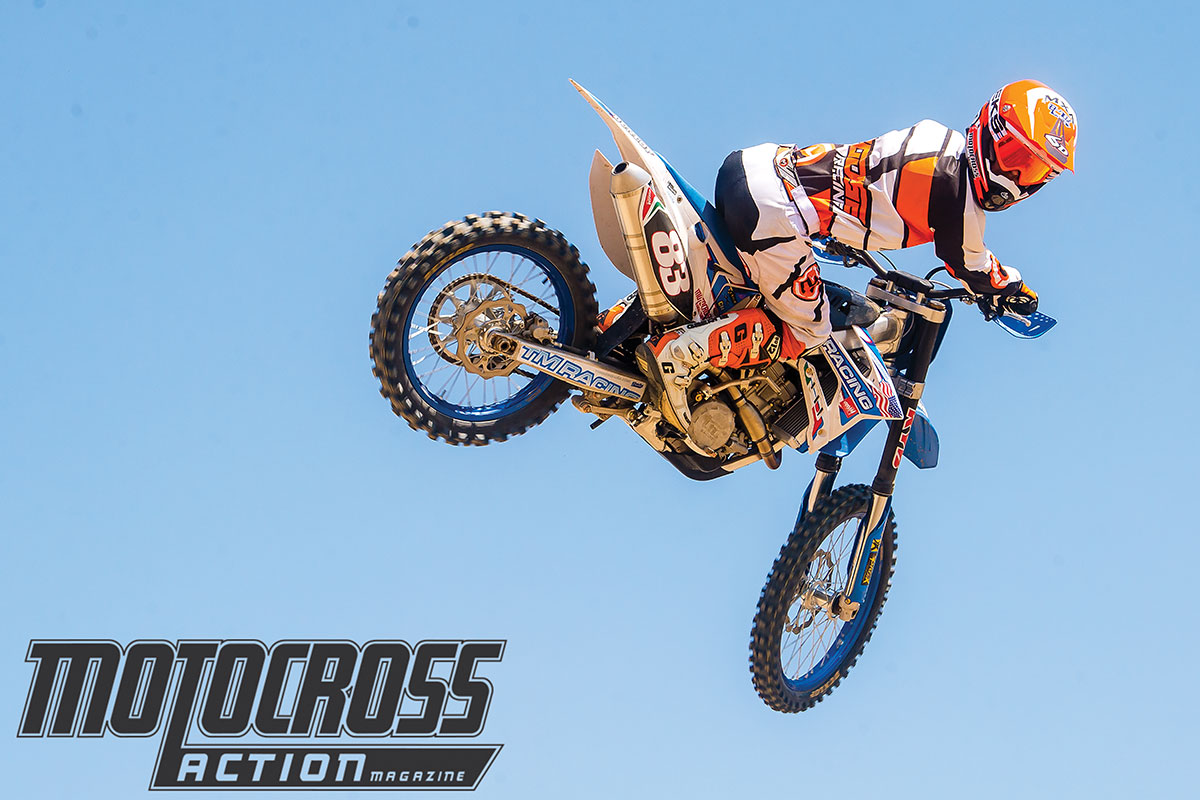
Q: FIRST AND FOREMOST, IS THE 2017 TM 250FI-MX BETTER THAN THE 2016 250FI-MX?
A: We have no way of knowing. The last time we tested a TM 250FI-MX was six years ago. We forgive TM for its lapse in getting its four-strokes out for testing. It is, for the most part, a two-stroke manufacturer. Yes, TM does make 250cc, 450cc and 530cc four-strokes, but its clientele wants smokers, and that is what TM delivers (in 85cc, 100cc, 125cc, 144cc, 250cc and 300cc displacements). We were excited to get the latest version of the fuel-injected TM 250 four-stroke, especially after a six-year hiatus.
Q: WHAT IS THE PRICE OF THE 2017 TM 250FI-MX?
A: The $10,500 price tag puts the TM 250FI-MX well past KTM and Husqvarna territory. There is also an electric-start option that costs an additional $500. TMs are not mass-produced machines that run down a never-ending assembly line like Vitameatavegamin. TMs are handmade in TM’s 40-man factory in very small numbers. TM doesn’t have the economy of scale of a monolithic corporation, thus it can’t amortize the cost of any part because it doesn’t order 10,000 pieces. In truth, 10,000 of any single part would last TM 10 years.
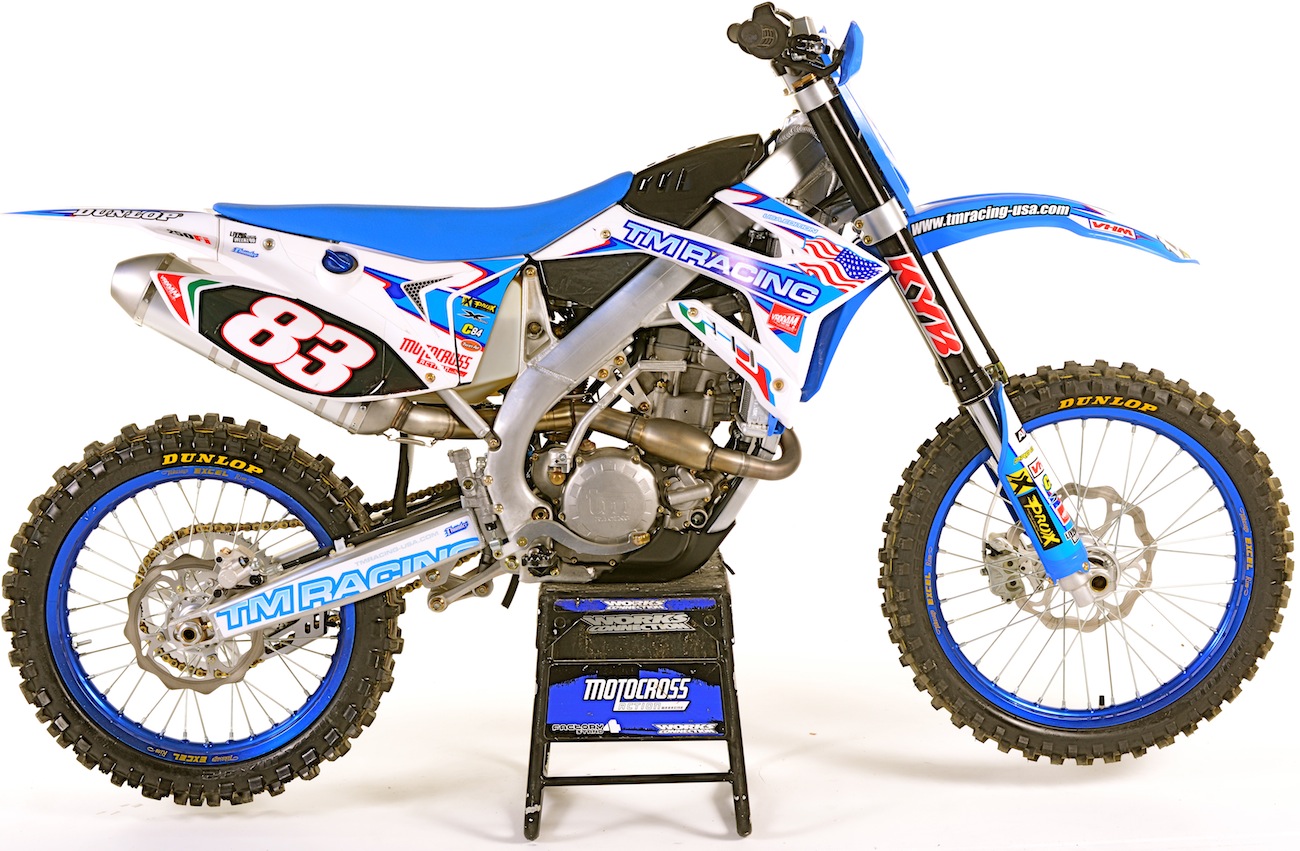 Q: WHAT’S UNIQUE ABOUT THE 2017 TM 250FI-MX?
Q: WHAT’S UNIQUE ABOUT THE 2017 TM 250FI-MX?

A: Virtually everything on a TM is unique.
Engine. The 250FI-MX’s twin overhead cam is a TM design from the ground up. TM builds the engine, along with the frame, swingarm, hubs, shock, triple clamps, throttle body and hydraulic clutch slave unit. How can a small boutique motorcycle company afford to build not just one contemporary engine but seven unique powerplants? TM is one of the world’s largest and most powerful suppliers of two-stroke go-kart engines. Thus, the company prides itself on its engine-building prowess and would never outsource to another company.
Maps. There are two maps accessible on the handlebar-mounted switch, and TM does not rely on ECU giant Kokusan to supply its computer parts. TM uses a Microtec ignition system and has different maps for first, second and third gears, while fourth and fifth share a map. Additionally, Microtec supplies programming tools that allow dealers to remap the curves to their hearts’ content.
Fuel injection. Unlike any other manufacturer in the world, TM makes its own EFI throttle body and mounts it behind the head at a 45-degree downward angle to maximize fuel misting and air velocity (think of it as being the same as the 2017 Honda CRF450 intake design—except TM got there first). The TM throttle body uses a 12-hole injector nozzle located on the bottom of the throttle body’s throat.
Clutch. As with the throttle body, TM makes its own hydraulic clutch slave unit, which it mates to a Brembo master cylinder. The six-spring clutch fits in a billet-machined, cush-drive, aluminum clutch basket that has been hard-coated for durability. TM even makes clutch plates in 2.8mm, 1.8mm, 1.5mm and 1.0mm thicknesses for tuners who want to fine-tune the feel or fix wear in a pinch.
Brakes. The front brake is a 270mm Galfer rotor powered by a Brembo master cylinder and caliper. The rear brake uses a Nissin master cylinder and caliper.
Suspension. The TM comes with Kayaba SSS forks that have been re-valved by TM. We surmise that they are 2011 Yamaha forks. TM builds its own shock absorber. It uses a billet-machined and coated aluminum body with a piggyback reservoir that is moved inboard to make room for the central fuel tank. Consumers can order the 250FI-MX with either motocross or enduro valving, and an Ohlins TTX shock is also an option.
Fuel tank. The oval Twin Air air filter is where the gas tank would normally be and vice versa. It is a much cleaner and simpler design than the Yamaha YZ250F version. The filter can be accessed by removing one bolt, and the gas cap is mounted on the right side of the bike like on a Formula 1 car.
Tires. The stock OEM tires are a Mitas C-19 in the rear and Mitas C-20 on the front. You may recognize the Mitas name, because Mitas is a Czech company that bought the motorcycle tire molds and licensed the name from the Swedish Trelleborg A.B. firm, which enabled them to build Trellies in the Czech Republic. Additionally, Mitas is part of a conglomerate that also owns Barum tires (if you’re old enough to remember Barum). In 2015, Trelleborg, which is still in business making agricultural and industrial tires, bought Mitas for $1.2 billion. We could live with the rear tire, but the front had to go.
 The black gas tank is actually the airbox. The fuel is stored amidship in the translucent tank under the saddle. You can check for fuel in a glance.
The black gas tank is actually the airbox. The fuel is stored amidship in the translucent tank under the saddle. You can check for fuel in a glance.
Q: HOW FAST IS THE 2017 TM 250FI-MX?
A: This is a fast motorcycle—maybe not the fastest in the class, but it has no reason to hang its head. It jumps to life and pulls with authority. As you would expect from a company that prides itself on its engine designs, it has a clockwork-like feel, sound and hum. It can run with the best of them—and it is the only six-speed 250 four-stroke offered for sale in the USA.
Q: HOW DOES THE 2017 TM 250FI-MX HANDLE?
A: The TM 250FI-MX is a cornering fool once you get the suspension in balance and dropkick the Czech tires. It is a big bike, and we spent considerable time trying to find ways to make the 250FI-MX feel smaller and more agile. If this bike were lowered about an inch, and if the suspension were plusher and the tires were updated, we would rate this in the top three in overall handling. But, it isn’t low, plush or tacky.
We can’t blame the Kayaba SSS forks, because they have proven to be spectacular when valved and installed on the other blue bike. Most of TM’s ergonomic issues stem from the way the bike rolls out of the factory. We don’t want to say that TM’s engineers have missed the boat on setup, but they have certainly been left standing on the dock. With better valving and more thought put into the shock spring rate, the TM would be a completely different machine.
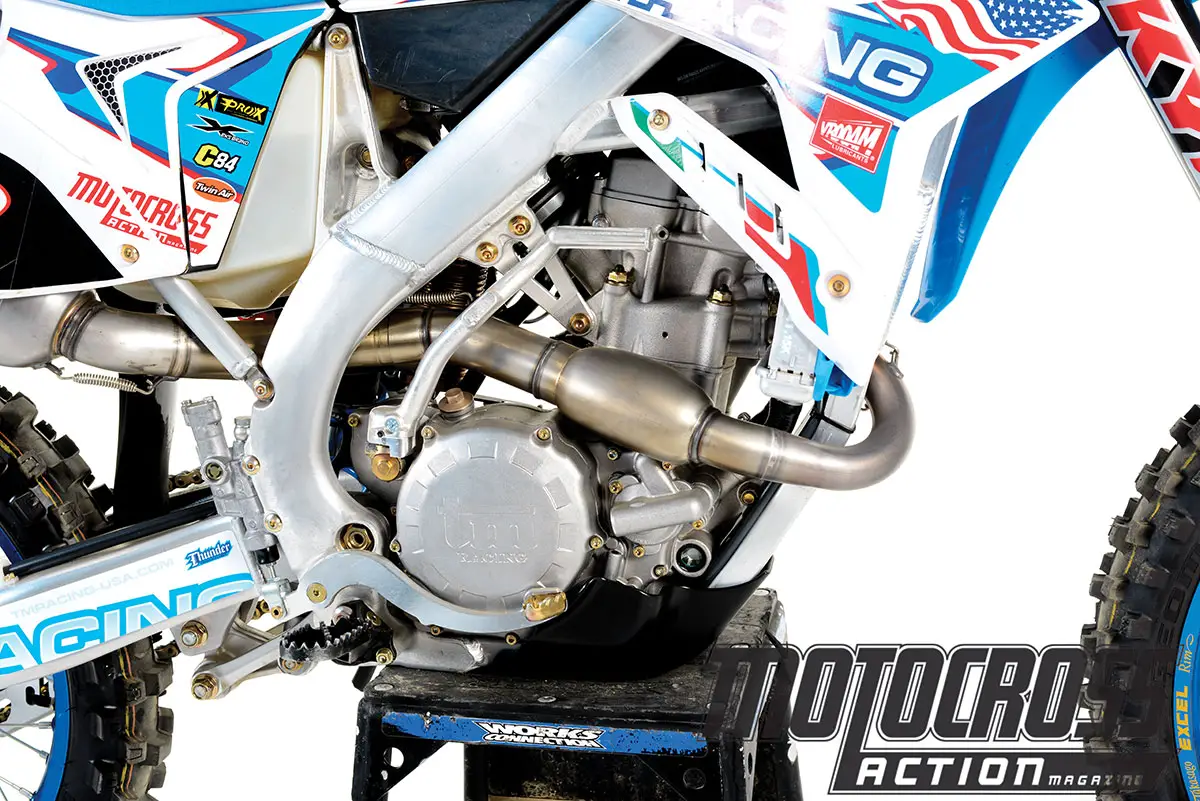
Q: WHAT DID WE DO TO FIX THE 2017 TM 250FI-MX?
A: Here is what the MXA wrecking crew did, or wanted to do, to make the 250FI-MX a better racing machine.
(1) Forks. We accept that Kayaba cannot valve TM’s forks to Yamaha’s spec—that would violate their fiduciary relationship with Yamaha; however, there is nothing stopping TM from coming up with plusher valving on its own. As it sits, the fork rides high, is overly stiff and feels as though it has cement in it. Our quick fix was to lower the oil height in the forks by 20mm.
(2) Shock. Who rides these things in Italy? Guys who are 250-pound Andre the Giant wannabes? We ash-canned the stock 48 N/m shock spring for a softer 46 N/m spring to get the bike to settle and the shock to move. The MXA test riders aren’t 130-pound jockeys, but we found a lightweight Pro and put him on the bike, and he was back in one lap complaining that the suspension wouldn’t move. The natural customer for a 250 four-stroke is a 16-year-old kid—devoid of fat or fear. The TM 250FI-MX is set up for a 175-pound Pro on a Supercross track (or a track with no bumps). A little less spring went a long way on the shock, but for its target market, TM would have to go even softer (and perhaps shorten the shock to lower the ride height). If you are on the small side, think about a 44 N/m spring.
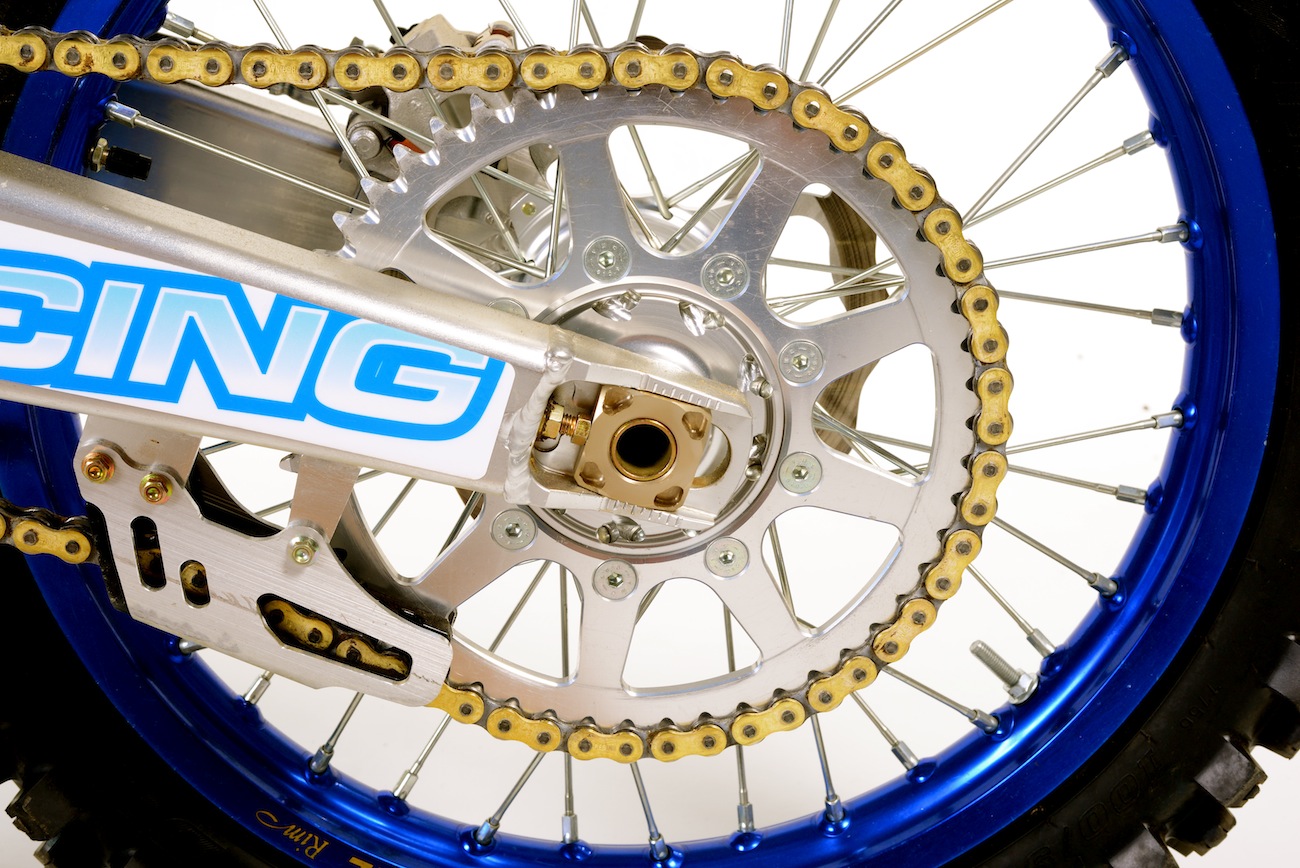 There are nine sprocket bolts on the TM’s rear hub. The first time we change rear sprockets, we leave three bolts out.
There are nine sprocket bolts on the TM’s rear hub. The first time we change rear sprockets, we leave three bolts out.
(3) Gas cap. We love the look of the side-mounted gas cap and mid-chassis fuel tank, but the cap is impossible to remove. We added an aftermarket TM cap because it had larger winglets, but it was still a struggle. At least it gave us a fighting chance of getting the cap off.
(4) Seat height. It’s skyscraper tall. We ran the sag at 108mm and slid the forks up in the clamps to bring the overall height down—not just so the bike would carve and turn better, but so our feet could touch the ground on the starting line. With the stock seat height and tall bars, you have to be over 6 feet tall to feel comfortable.
 The air filter is in the gas tank. Think of it as a simpler version of the Yamaha air filter system or the reverse of the 2017 Honda CRF450 filter.
The air filter is in the gas tank. Think of it as a simpler version of the Yamaha air filter system or the reverse of the 2017 Honda CRF450 filter.
Q: WHAT DID WE HATE?
A: The hate list:
(1) Rear sprocket bolts. It takes twice as long to change a sprocket on a TM as on any other bike. The nine sprocket bolts seem like overkill.
(2) Height. If you are short, your toes aren’t going to be able to touch the ground. The seat height is way up there.
(3) Starting. It requires a tricky routine. This is a hard bike to kick to life until you learn the inside secrets via trial and error.
(4) Decompression braking. Just like the TM 450FI-MX that we tested earlier this year, the 250FI-MX has old-school engine braking.
(5) Tires. Apologies to our friend Bertil Bengtsson, but Mitas tires would not be our first choice.
(6) Gas cap. We loved the look of the side-mounted gas cap, but kept a pair of pliers handy.
(7) Airbox. We like this front-mounted airbox a lot more than the one on the YZ250F because it is simple; however, lots of dirt goes in the large vents in the airbox cover, and even more noise comes out. The vents need a foam or mesh screen to keep dirt clods out of the filter.
(8) Setup. This bike could be so good if someone at the factory cared about the American market.
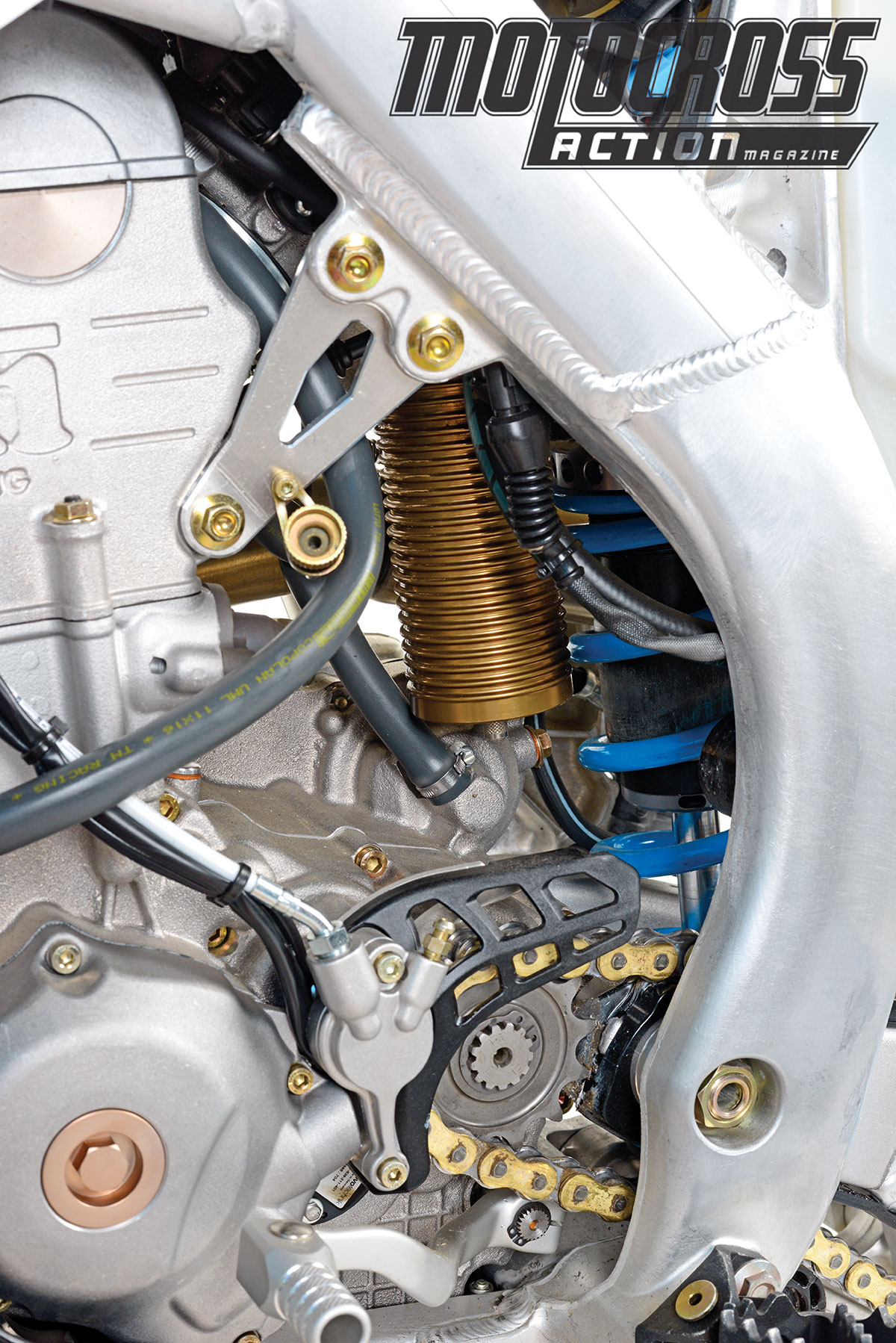
Q: WHAT DID WE LIKE?
A: The like list:
(1) Brakes. Awesome power and superb modulation. Just imagine KTM brakes but with an oversized 270mm rotor.
(2) Wheels. Blue Takasago Excel rims are laced to very sleek, polished spool hubs.
(3) Map switches. There are two maps available on the handlebars. We ran map 2.
(4) Shifting. Good, solid and predictable. Plus, the clutch can take abuse.
(5) Handling. Even with the questionable tires, the TM 250FI-MX can turn on a dime.
(6) Gas tank. The translucent gas tank makes it easy to tell if you have enough gas for the next moto. And, even though we hated that we couldn’t get the gas cap off, we loved showing it to people, hoping that one of them would be strong enough to break the seal.
(7) Airbox. Happiness lies somewhere between Yamaha’s and TM’s front mounted airboxes.
 You put gas in the TM 250FI-MX from the side. The stock gas cap sticks and doesn’t have much in the way of leverage. We installed an aftermarket cap that had larger tangs to twist with. The air vent in front of the gas cap is a fake sticker.
You put gas in the TM 250FI-MX from the side. The stock gas cap sticks and doesn’t have much in the way of leverage. We installed an aftermarket cap that had larger tangs to twist with. The air vent in front of the gas cap is a fake sticker.
Q: WHAT DO WE REALLY THINK?
A: Did we mention that TM specializes in two-strokes? That is its bread and butter. Two-strokes are what TM is good at. As for TM’s four-strokes, the company has all the right pieces to build a world-beating thumper—but TM put the pieces together wrong. If you feel up to it, you can make it right.
MXA’S TM 250FI-MX SETUP SPECS
 This is how we set up our TM 250FI-MX for racing. We offer it as a guide to help you find your own sweet spot.
This is how we set up our TM 250FI-MX for racing. We offer it as a guide to help you find your own sweet spot.
KAYABA FORK SETTINGS
Given that these forks are Kayaba SSS forks, there is no reason they shouldn’t perform well. But, as they roll out of the factory, they ride high, are harsh and ramp up quickly. For hardcore racing we ran this setup on the 2017 TM 250FI-MX (the stock settings are in parentheses):
Spring rate: 0.46 N/m
Compression: 17 clicks out (12 clicks out)
Rebound: 12 clicks out (17 clicks out)
Fork-leg height: 5mm up
Notes: We lowered the oil height by 20mm to get a plusher feel. We think that anyone under 150 pounds would need the 0.44 spring.
TM SHOCK SETTINGS
The rear of the TM 250FI-MX rode high in its stroke and was very firm on compression. Our first change was to install a softer shock spring, then we focused on the high-speed compression to encourage the shock to drop into its travel quicker. We also sped up the rebound—not just to free up the shock, but to take advantage of the crossover effect on the low-speed compression valve stack. For hardcore racing we ran this setup on the 2017 TM 250FI-MX (the stock settings are in parentheses):
Spring rate: 46 N/m (48 N/m)
Hi-compression: 12 clicks out
Lo-compression: 8 clicks out
Rebound: 15 clicks out
Race sag: 108mm
Notes: We set the sag at 100mm, but began lowering it as part of a two-prong approach to getting a more supple feel, and to get the chassis closer to the ground. The U.S. TM importer will work with you to get the shock valved to your height and weight. This is important, because very few suspension shops have ever seen a TM factory shock—although internally it is fairly standard. For more help, go to www.tmracing-usa.com or call (951) 850-6021.





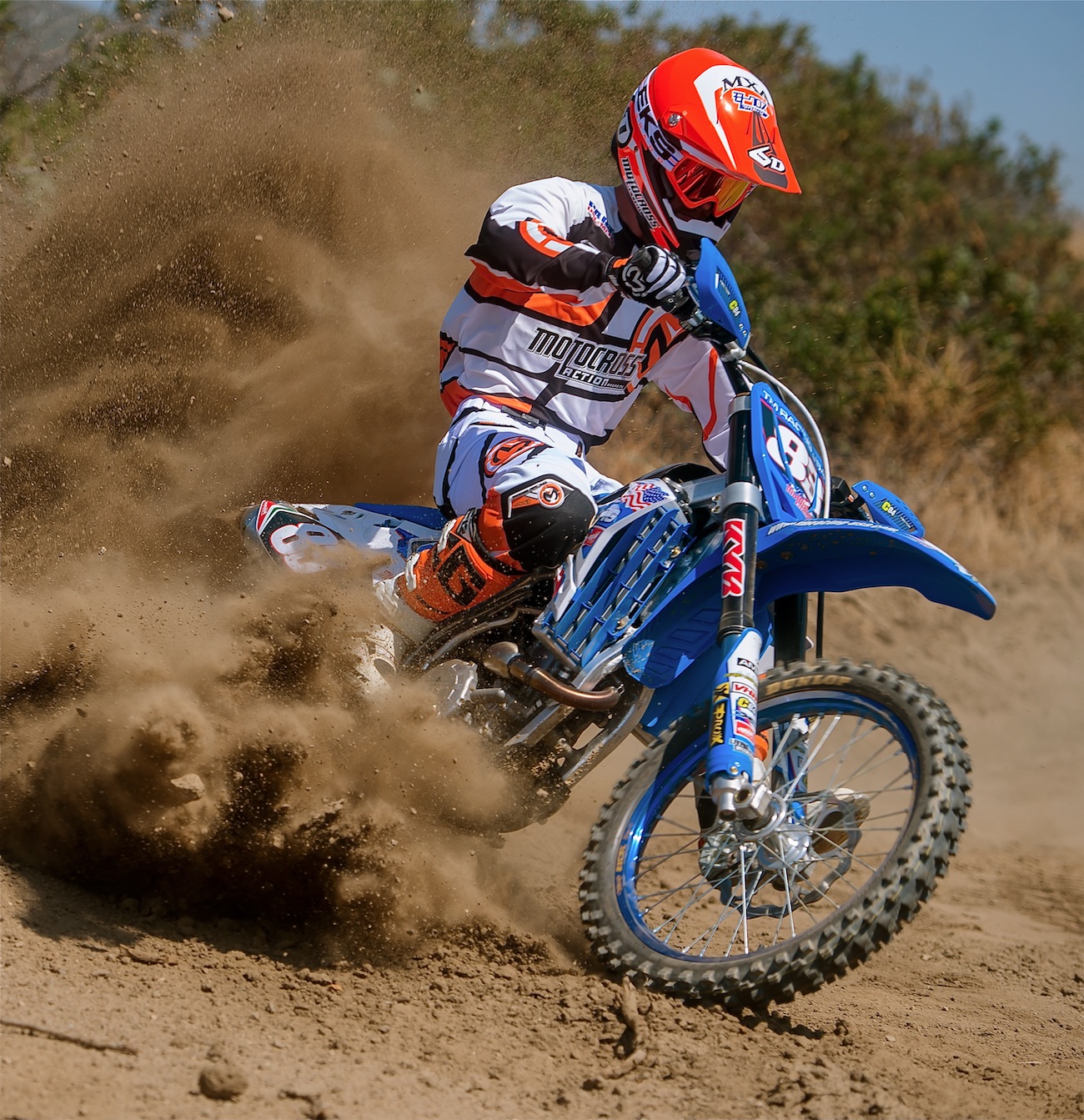




Comments are closed.